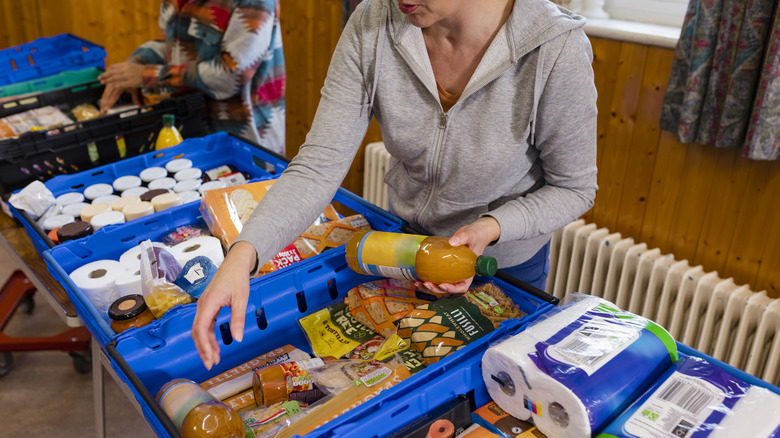The Country That Wastes The Most Food
Food waste is a global problem, but not all countries contribute to it equally. As you might suspect, many of them could do better. In terms of sheer volume, the biggest culprits are often the most populous. According to 2024 data from World Population Review, China tops the list with the highest total annual food waste followed by India, then Pakistan, Nigeria, and the United States. Together, these five countries are responsible for a staggering portion of the world's discarded food. However, context matters, as large populations naturally produce more waste overall, even if food habits or infrastructure aren't particularly wasteful.
In China (108 million tons) and India (78 million tons), for example, rapid urbanization, inefficient food distribution systems, and rising consumer incomes contribute to food waste both commercial and consumer. There's a significant drop here to Pakistan which produced 31 million tons. Nigeria followed with 25 million tons, and the United States rounded out the top five at 24 million tons. These figures showcase the massive scale of global food waste, particularly in nations where population and industrial growth strain the food supply chain.
These countries waste the most food per person
Globally, around 1 billion tons of food is wasted every day, but households are only responsible for about 60% of that proportion. Food services like restaurants account for 28%, while retail (think grocery stores) adds 12%.Unfortunately, that's about 132 kilograms of food waste per person, per day ... yikes. To get a clearer picture of wasteful habits worldwide, we get a much more nuanced understanding when we look at food waste per capita — and here, smaller countries take the lead. (What country does cruise ship buffet food waste belong to?)
In 2024, Kuwait produced the most food waste per capita followed by the Maldives, Tunisia, the Dominican Republic, and Egypt. These rankings highlight how affluence, tourism, and cultural behavior can dramatically influence waste levels. For example, Kuwait's wealth and reliance on food imports mean that a lot of excess ends up uneaten.
The Maldives is a hub for global hospitality and resorts and sees high food waste from its tourism sector because of it. Countries like Egypt and Tunisia, which face food insecurity issues in rural regions, show high urban food waste; highlighting the difference in eating practices even within cultures.
What can be done about global food waste?
Food waste drives up greenhouse gas emissions and depletes land, water, and labor without feeding those in need. There's not really one way to combat the issue because it requires tailored strategies based on regional causes. In high-volume countries like China and India, overhauling supply chains, clarifying food labeling, and encouraging consumer education could help. More efficient transportation and refrigeration can also reduce spoilage before food even reaches the shelf. For high per-capita waste countries like Kuwait and the Maldives, solutions could potentially lie in behavioral or legislative shifts. Government-mandated portion sizes or criminal fines for not composting unused food would be tricky to put into practice, but rethinking hospitality norms could help quite a bit so long as tourists didn't leave to vacation somewhere else in response.
Tech solutions are helping too — apps that connect restaurants with food banks or consumers looking for discounted goods close to expiry are gaining traction. When food is cheap and abundant, waste is easier to ignore. Global hunger has been on the decline for decades now, but it saw an uptick back in 2020. As inflation drives up prices and environmental concerns continue, reducing food waste could become front and center on everyone's minds once again. But successful reduction strategies already exist, like innovative inventions that let consumers know when their food is spoiled – so there is hope.


